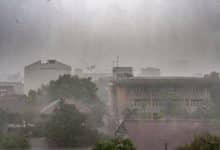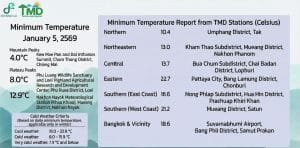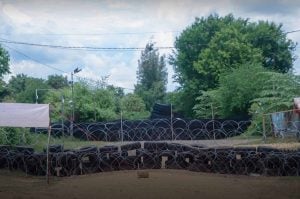La Niña to bring heavy rains but overall 26% below average

The Office of the National Water Resources (ONWR) issued a warning about heavy rainfall from August to September due to the impact of the La Niña phenomenon, while also noting that this year’s total rainfall is expected to be 26% below average.
ONWR Deputy Secretary-General Paitoon Kengkarnchang confirmed that the weather pattern will shift to a typical La Niña form starting in July, and continuing until the end of the year.
Thailand recently started its rainy season, which the Thai Meteorological Department (TMD) officially states runs from May 20 until mid-October. Rainfall is projected to decrease from June to mid-July. However, heavy rainfall ranging from 60% to 80% is anticipated from August to September, potentially leading to flash floods in numerous areas. At least two storms are expected to strike the country during this time, Paitoon stated.
“Although we have faced a La Nina pattern this year, the amount of water is believed to be 26% less than normal.
“Some reservoirs might have a lower volume of water while some will have more water, so we do need to have a good water-management plan for different areas.”
Paitoon emphasised that state agencies are collaborating to enhance early warning systems for floods to mitigate damage to local communities affected by the rains.
Since the onset of recent rains, 1,078.1 billion cubic metres of water have flowed into 35 major reservoirs nationwide. Of this total, 28.9% is in the north, 15.9% in the west, 15.6% in the south, 20.9% in the northeast, 12% in the east, and 6.8% in the central region.
Currently, the volume of water storage in reservoirs nationwide stands at 41.185 billion cubic metres or 51%, compared to 43.370 billion cubic metres or 55% last year, reported Bangkok Post.
Regarding rice cultivation, the Ministry of Agriculture and Cooperatives will request farmers to expedite planting during the rainy season. According to the plan, 62.44 million rai are available for rice planting, encompassing both irrigation and non-irrigation zones. So far, 1.29 million rai have already been planted.
Latest Thailand News
Follow The Thaiger on Google News:


























